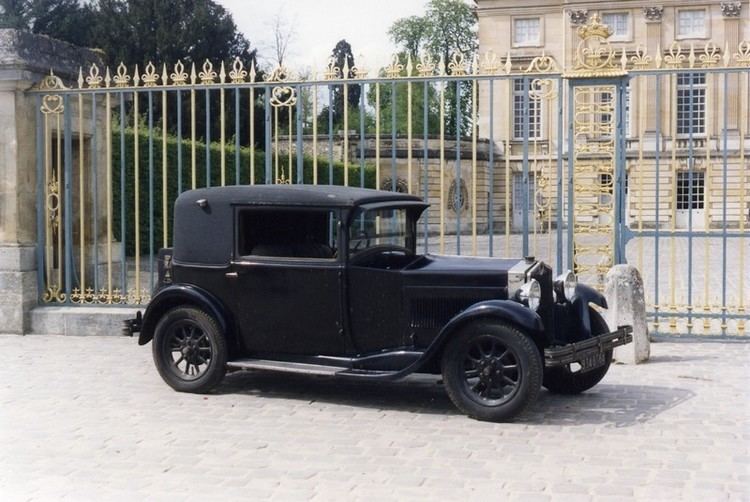 | ||
Weymann Fabric Bodies is a patented design system for fuselages for aircraft and superlight coachwork for motor vehicles. The system used a patent-jointed wood frame covered in fabric. It was popular on cars from the 1920s until the early 1930s as it reduced the usual squeaks and rattles of coachbuilt bodies by its use of flexible joints between body timbers.
Contents
- Weymann body system
- Advantages when compared with conventional coachbuilt construction
- Designer and patent holder
- Construction Z
- Coachbuilder licensees
- English licensees 1928
- References
The system when used on cars provided quieter travel, and improved performance because of the body's light weight; but gave little protection in the event of a serious accident, and without care (the materials being prone to rot), a potentially short life. Fabric provided a matt surface and the framework sharp corners. Later supporting metal corner-inserts were employed to smooth corners and the fabric could be finished with layer upon layer of hand-sanded paint, called Tôle Souplé, giving the impression of polished metal panelling.
Introduced to the market in 1921, Weymann's bodies fell out of popularity within a decade.
Weymann body system
The Weymann system comprises an ultra-light wood framework with special metal joints so that timber does not touch timber. Small metal panels are inserted between the fabric and the framework to make rounded external corners. Straining wires are fitted to hold the doors in shape when they are stressed by acceleration or bumps. The frame is then covered with muslin over chicken wire with a thin layer of cotton batting used to span large open areas and over this a top layer of fabric, usually a pigmented synthetic leather, is placed. Any exposed joints in the fabric are covered with aluminium mouldings. The seats are fixed directly to the chassis.
Passengers were therefore in almost direct contact with the firmly mounted engine. Where the market permitted some isolation was provided by luxuriously sprung passenger-seating often topped with inflated pneumatic cushions. For the luxury market it further encouraged the development of inherently smoother multi-cylinder engines in place of sixes and eights and, too late for Weymann, the introduction of flexible engine mounts and better chassis suspension systems in place of primitive leaf springs.
Advantages when compared with conventional coachbuilt construction
J Gurney Nutting of Chelsea, London, assured purchasers of his Weymann bodies, including The Prince of Wales:
Designer and patent holder
The system was invented by Charles Weymann (1889–1976). An early portrait may be seen in the archives of FLIGHT magazine.
Weymann's Paris coachbuilding business was located at Carrossier Weymann, 20 rue Troyon, Paris and their elegant and luxurious Bugatti, Rolls Royce, Hispano-Suiza, etc. bodied limousines and cars bore the label Les Carrosseries C. T. Weymann, 18-20 rue Troyon, Paris.
Construction Z
Daimler had always built their own bodies though as usual in that period to suit customers they provided a large number of chassis to external coach builders. In the second quarter of 1924 Daimler began building Weymann flexible framed fabric bodies for their "natural silence, the entire absence of drumming and all those attributes which make for comfortable long-distance touring with a minimum of fatigue". Seats were Dryad basket-chairs of wicker button-quilted in Bedford cord. Daimler chose to name its Weymann bodies Construction Z.
Coachbuilder licensees
The licensing company which provided customers with permits to make Weymann fabric bodies for fitting to chassis was based in Paris. Weymann claimed 123 licensees of his patents and that he received payment for around 70,000 bodies.
Licensed manufacturers included:
English licensees 1928
From a joint advertisement by the following Makers of Genuine Weymann bodies, placed by Weymann Motor Bodies (1925) Limited, 47 Pall Mall, London, SW1
